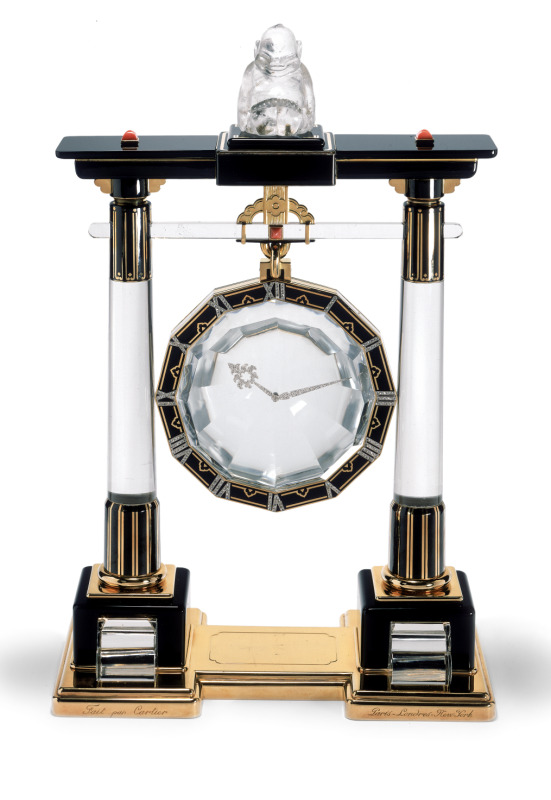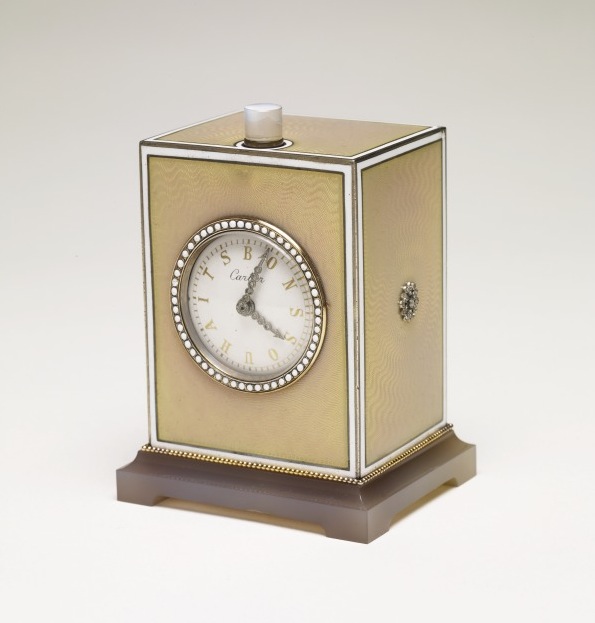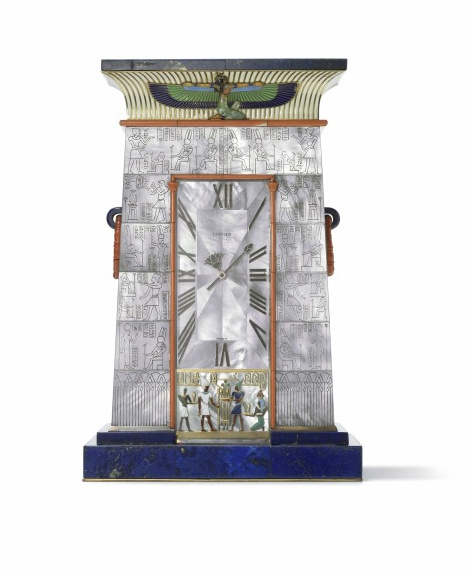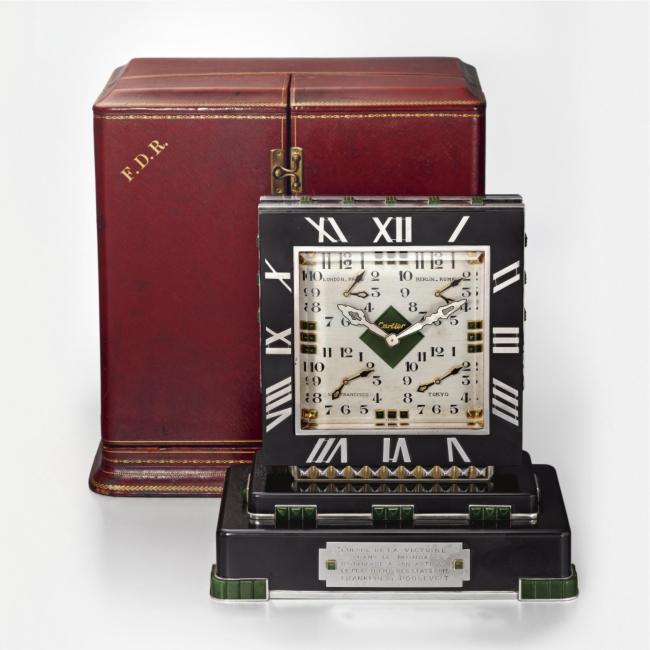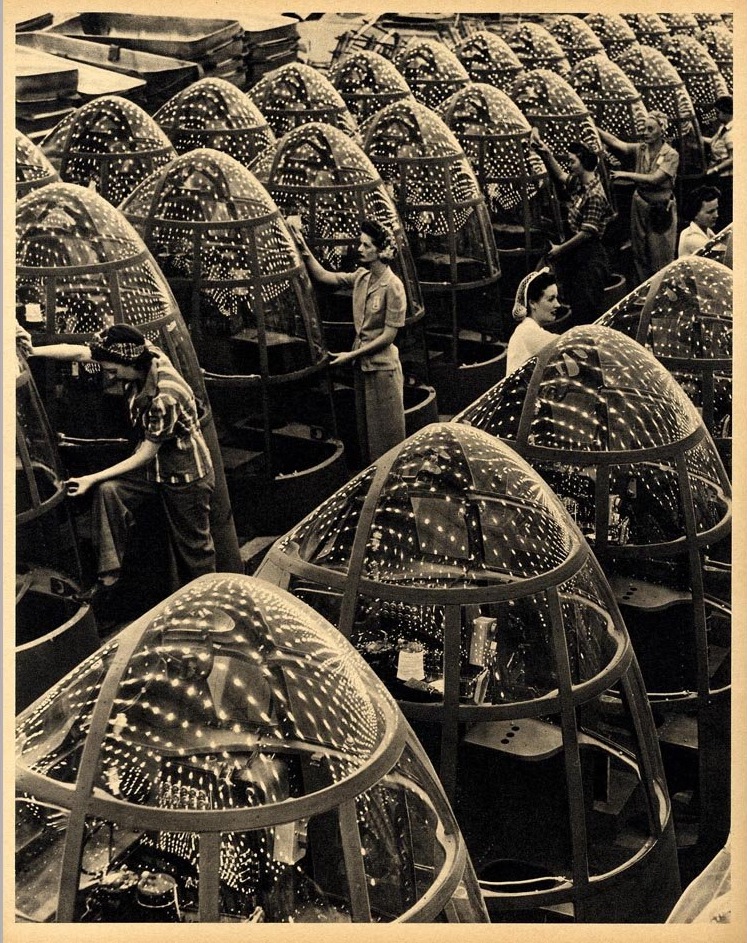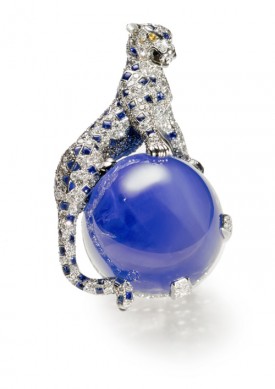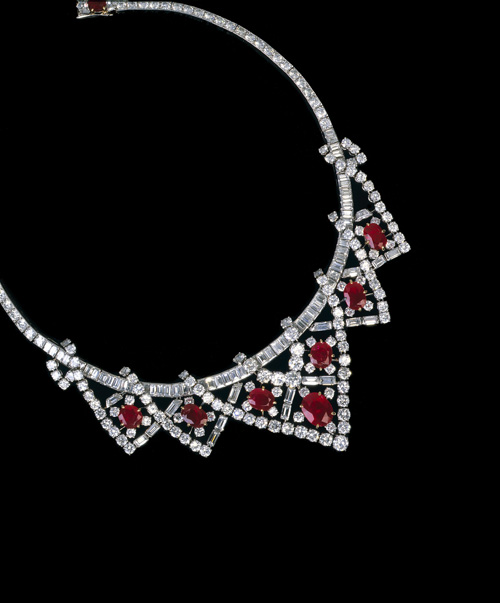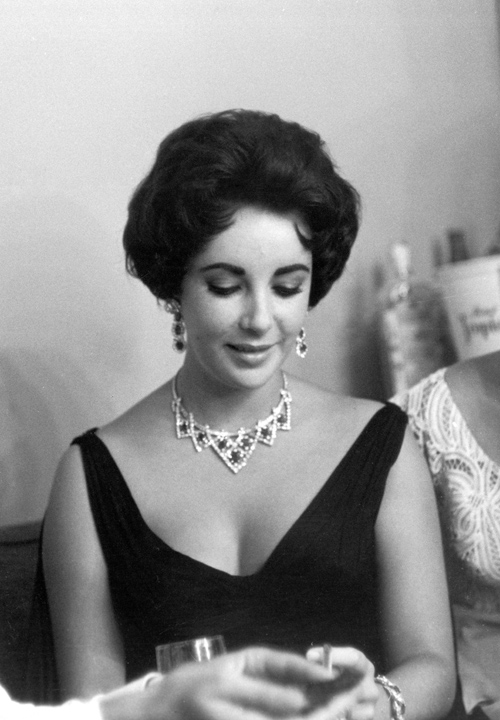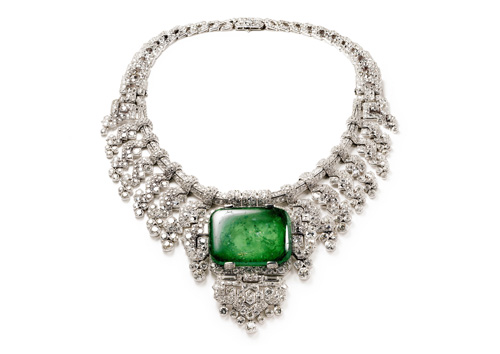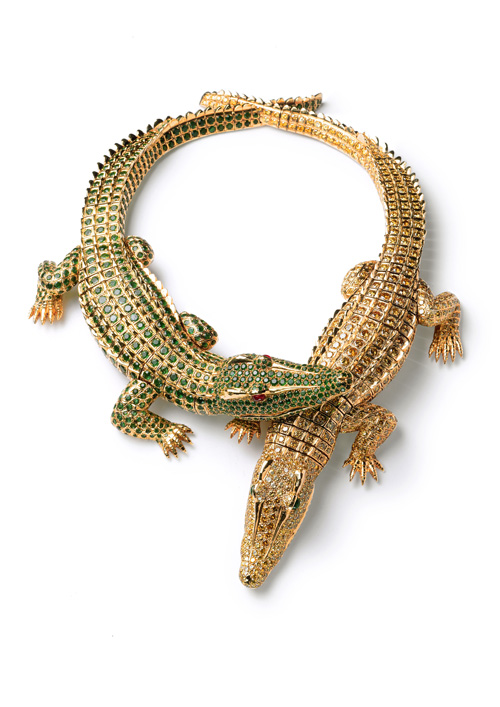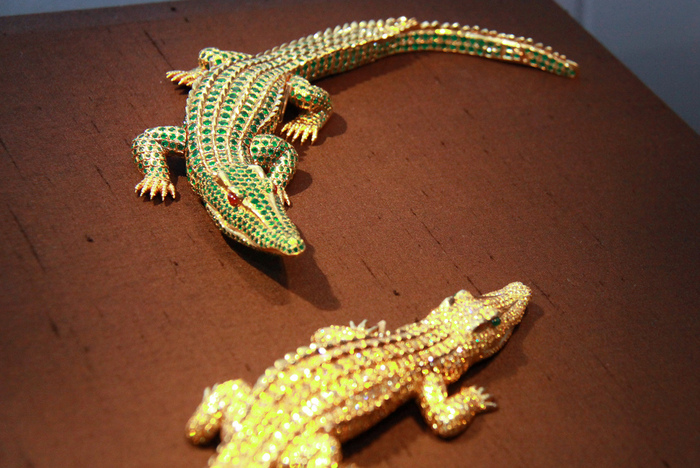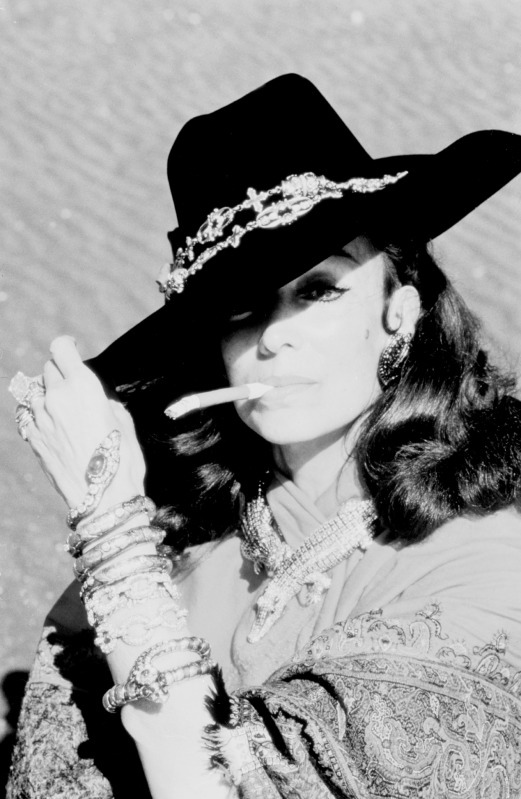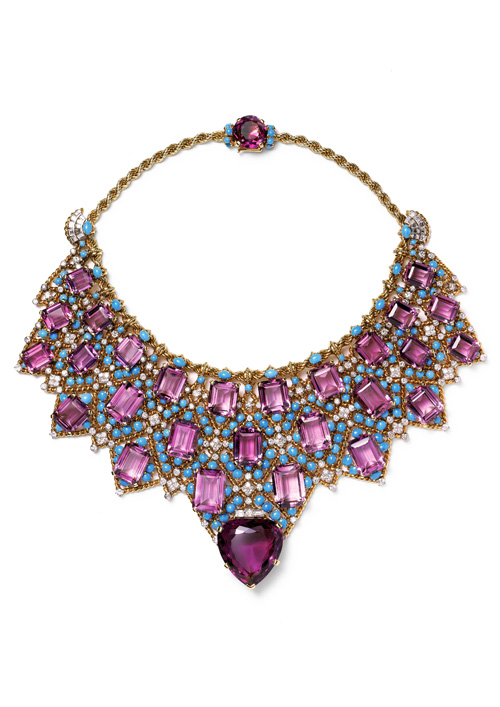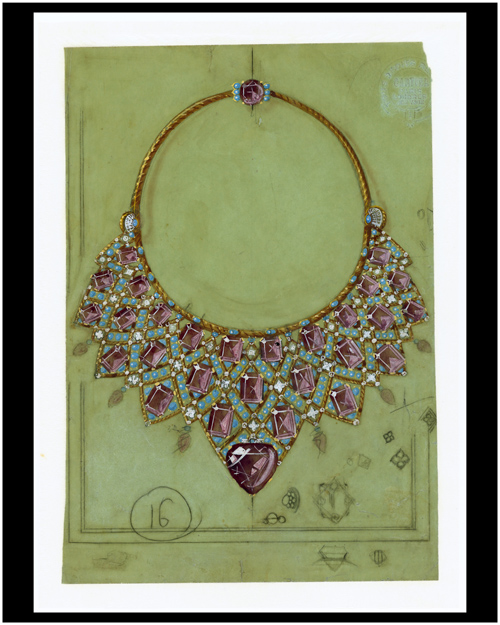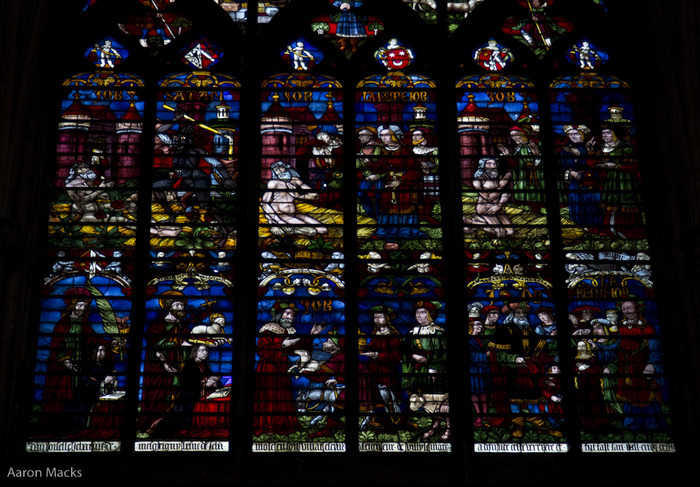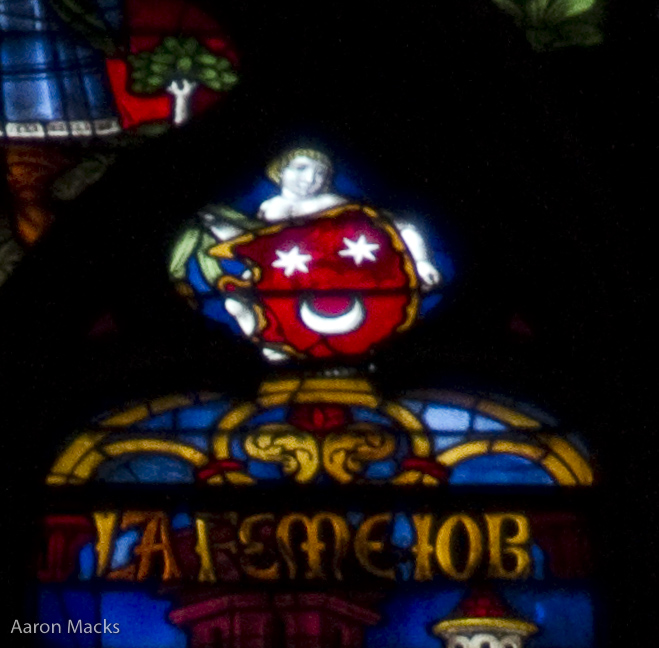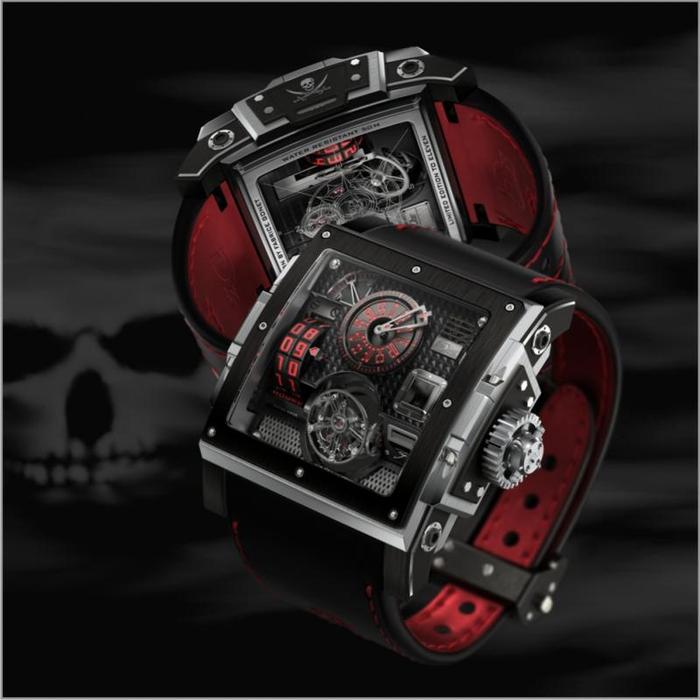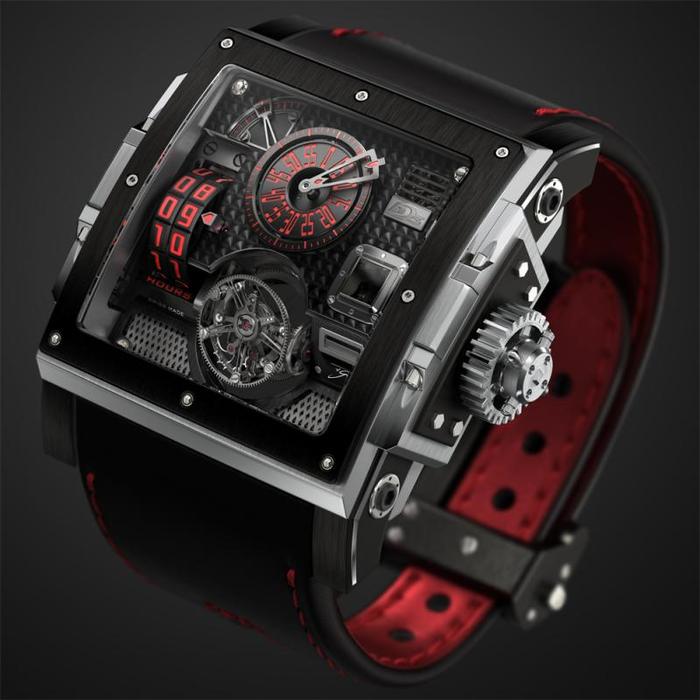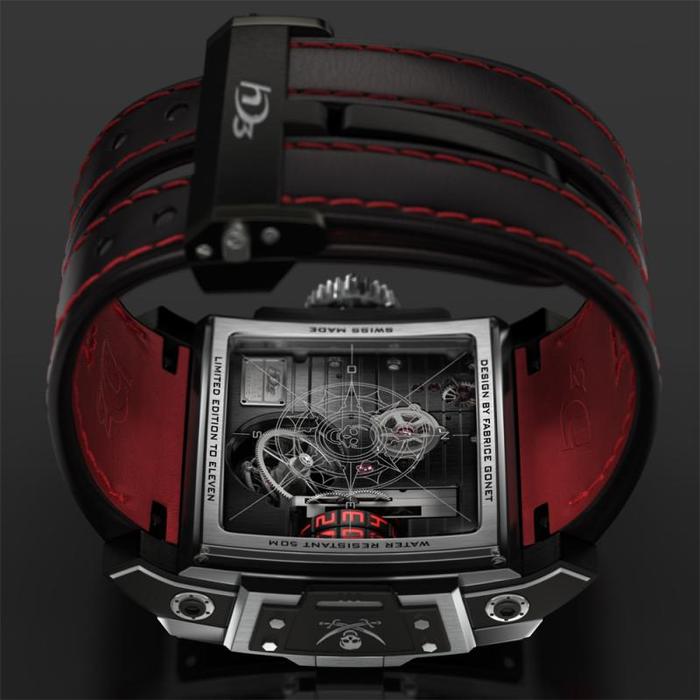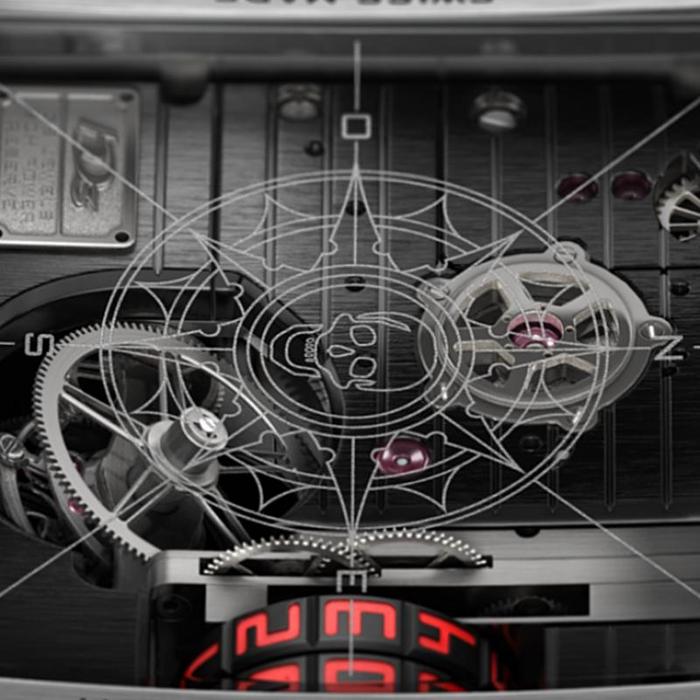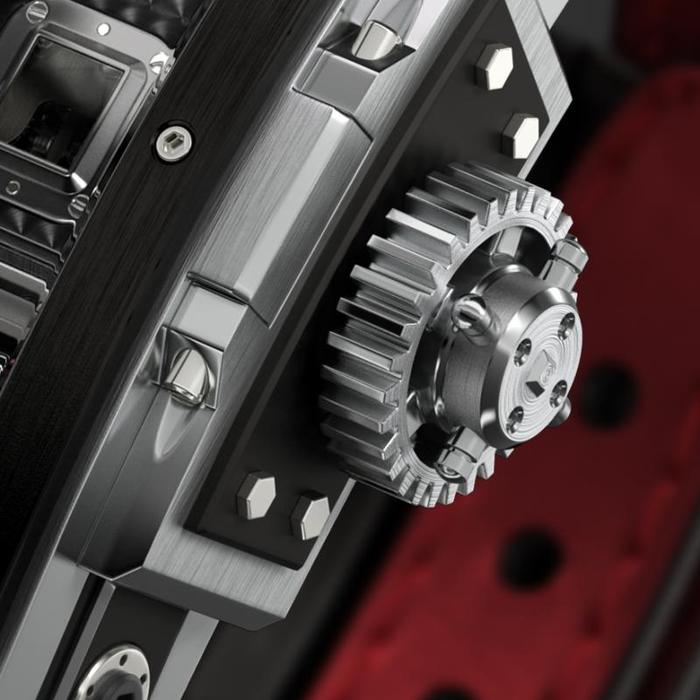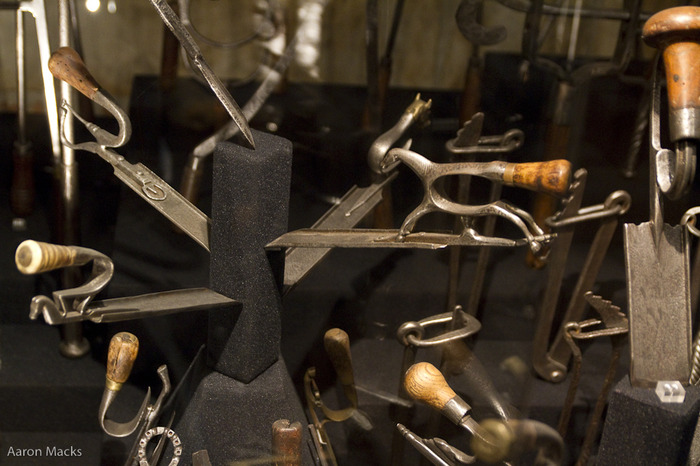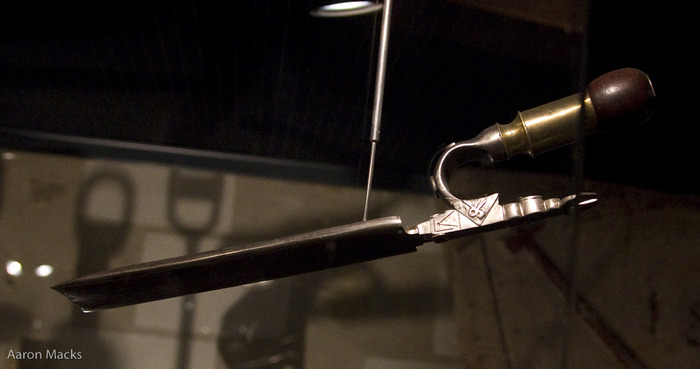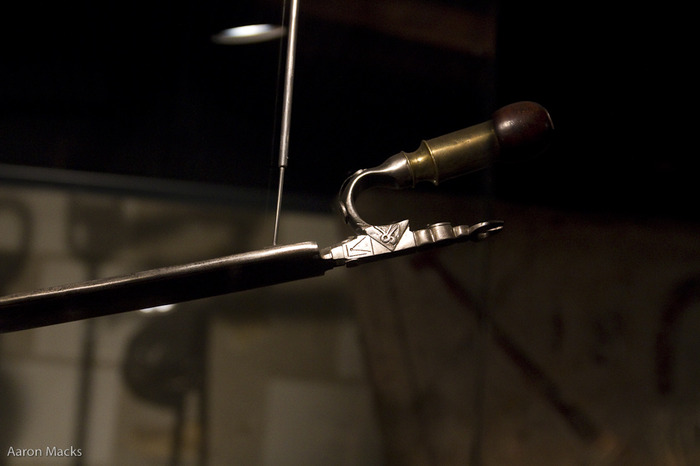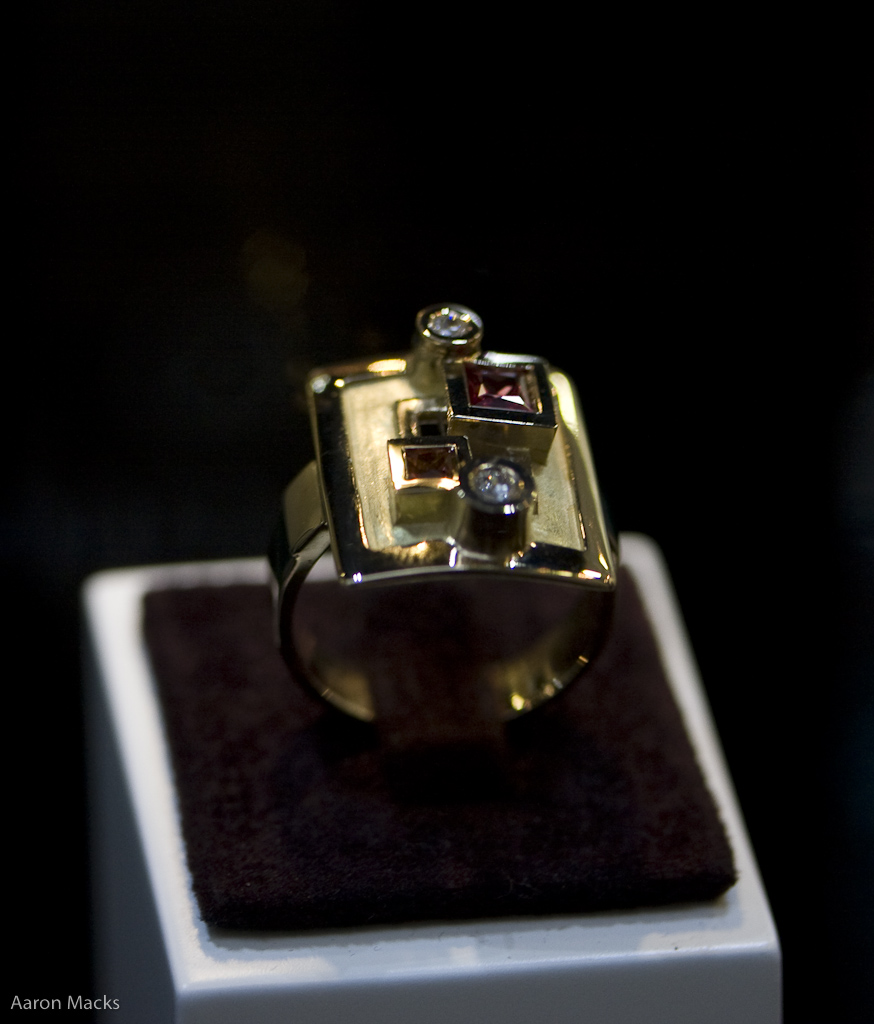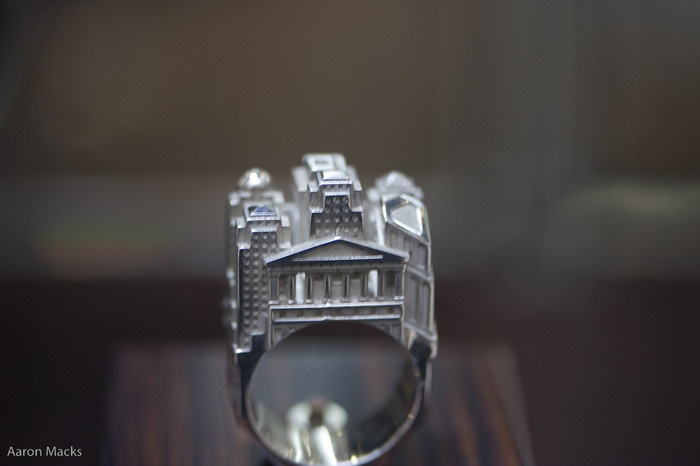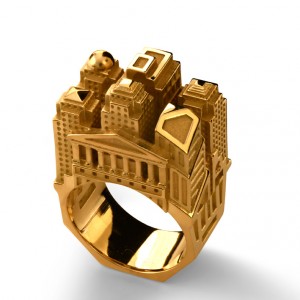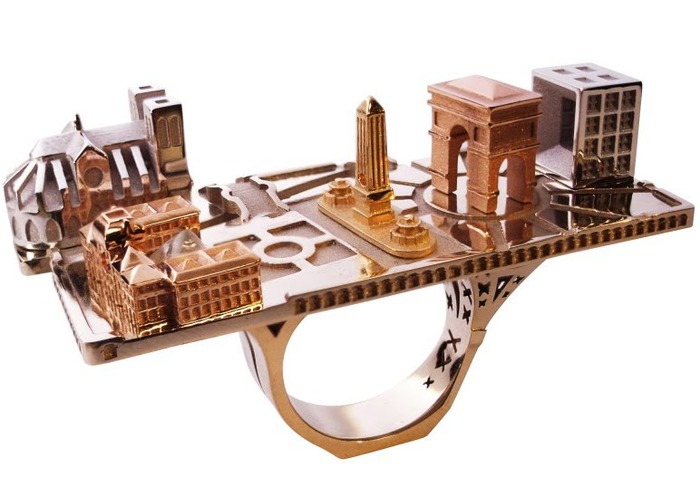Here is more of the jewelry from the Cartier in America exhibit previously referenced, twice.
First the "Tutti Frutti" Necklace from 1936, altered in 1963
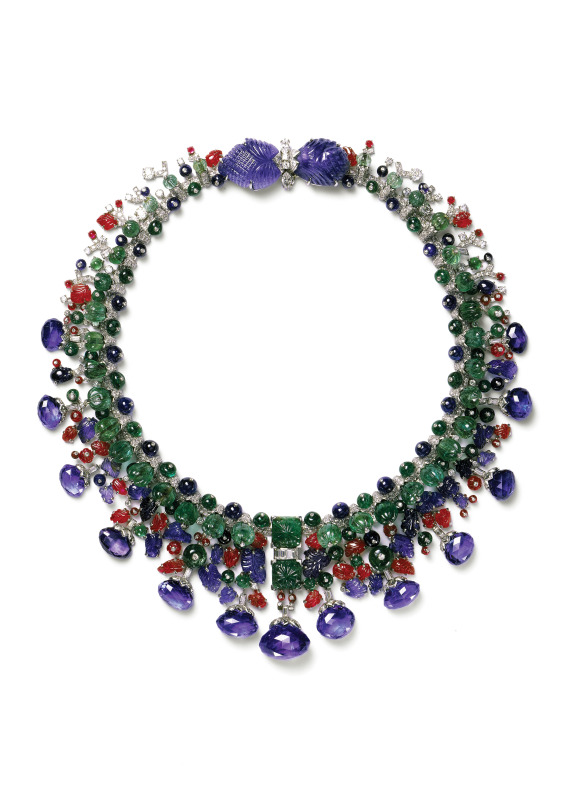
The piece is platinum and white gold, set with marquise, baguette, and round old-cut diamonds, thirteen briolette-cut sapphires weighing 146.9 carat in total, two leaf-shaped carved sapphires, 50.8 and 42.45 carats, sapphire beads, one sapphire cabochon, square carved emeralds, fluted and smooth emerald beads, and emerald cabochons. It is 43cm in length. (Photo by Nick Welsh, Copyright Cartier Collection)
It was commissioned by Daisy Fellowes, the Paris editor for Harper's Bazaar in the 1930s, and ocassionally hailed her as "the world's most elegant woman." She was the daughter of the Duke Decazes and Isabelle Singer (of the sewing machine fortune). Below is a picture of her wearing this piece
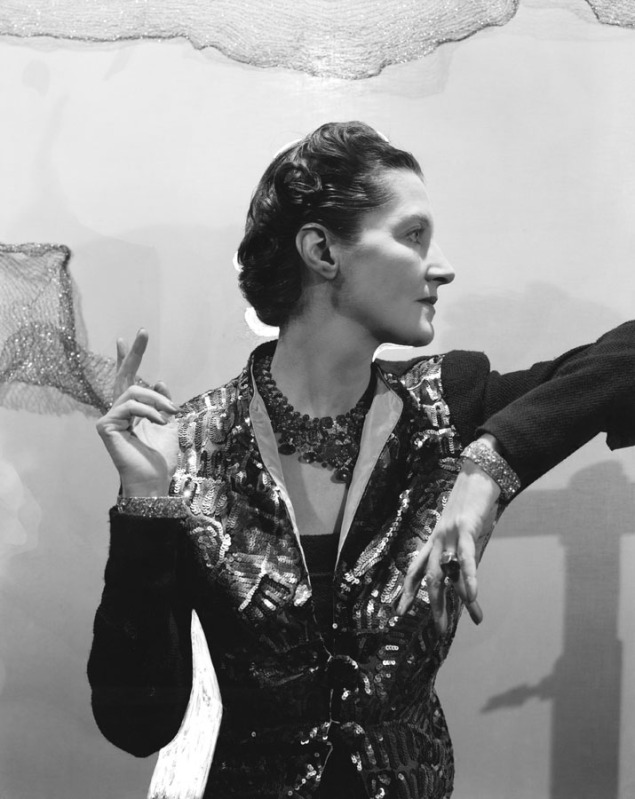
Here the Princess is shown in a formal portrait in 1959 wearing both pieces
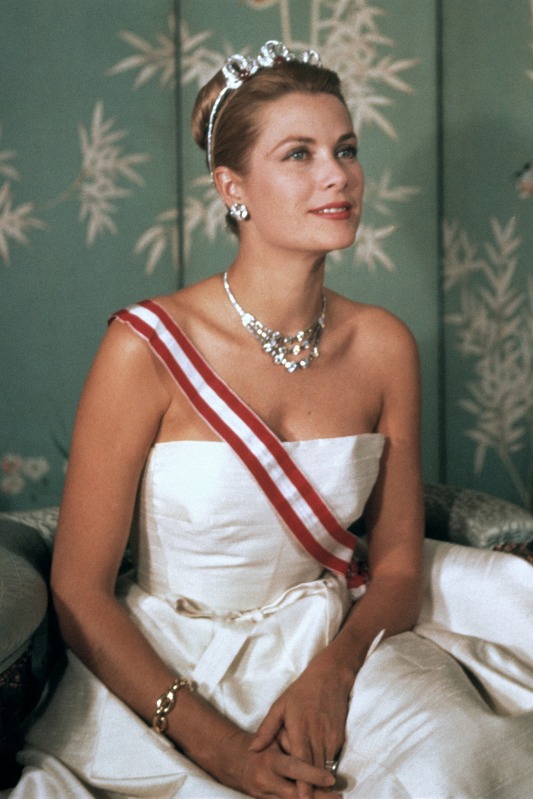
First the "Tutti Frutti" Necklace from 1936, altered in 1963

The piece is platinum and white gold, set with marquise, baguette, and round old-cut diamonds, thirteen briolette-cut sapphires weighing 146.9 carat in total, two leaf-shaped carved sapphires, 50.8 and 42.45 carats, sapphire beads, one sapphire cabochon, square carved emeralds, fluted and smooth emerald beads, and emerald cabochons. It is 43cm in length. (Photo by Nick Welsh, Copyright Cartier Collection)
It was commissioned by Daisy Fellowes, the Paris editor for Harper's Bazaar in the 1930s, and ocassionally hailed her as "the world's most elegant woman." She was the daughter of the Duke Decazes and Isabelle Singer (of the sewing machine fortune). Below is a picture of her wearing this piece

(Photo by Cecil Beaton. Courtesy of Sotheby')
Also on display are two pieces given by Prince Ranier to Grace Kelly, including her engagement ring, a 10.47 ct emerald-cut central stone flanked with 2 baguette-cut stones, set in platinum.
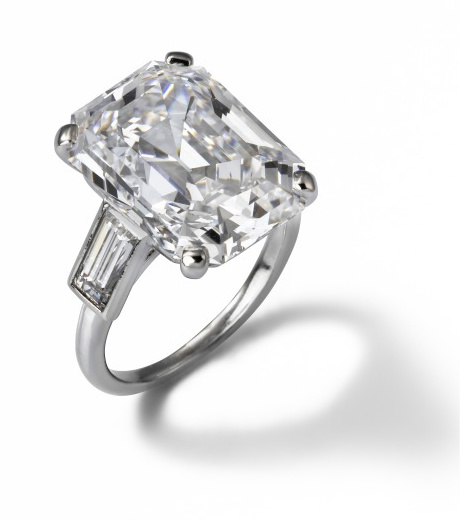
Also a Riviere necklace, of diamonds set in platinum from 1953
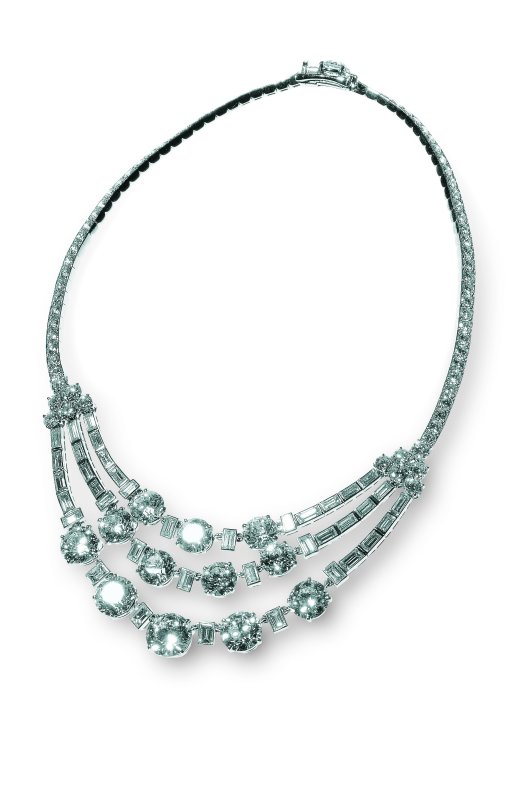
Also on display are two pieces given by Prince Ranier to Grace Kelly, including her engagement ring, a 10.47 ct emerald-cut central stone flanked with 2 baguette-cut stones, set in platinum.

Also a Riviere necklace, of diamonds set in platinum from 1953

Here the Princess is shown in a formal portrait in 1959 wearing both pieces

(The three preceeding pictures are from the Palais Princier de Monaco)
Also a still from her last film appearence, High Society, shows the then engaged Kelly wearing the ring (Photo by Dennis Stock/Magnum Photos, via)
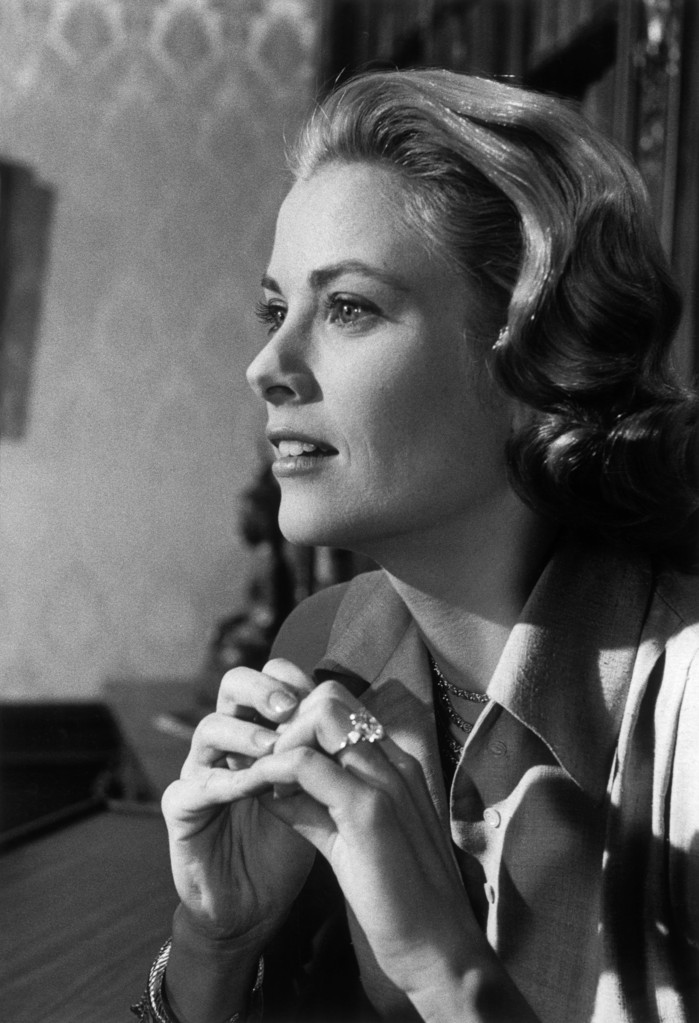
Finally a large shoulder broach, made for Marjorie Merriweather Post in 1923. It is platinum, set with diamonds and seven large Indian emeralds, including one dating back to the Mughal Empire
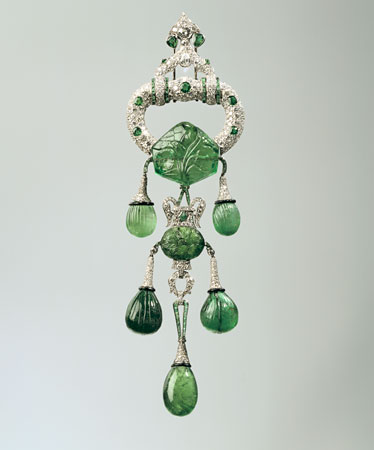
(Picture via)
A
Also a still from her last film appearence, High Society, shows the then engaged Kelly wearing the ring (Photo by Dennis Stock/Magnum Photos, via)

Finally a large shoulder broach, made for Marjorie Merriweather Post in 1923. It is platinum, set with diamonds and seven large Indian emeralds, including one dating back to the Mughal Empire

(Picture via)
A

